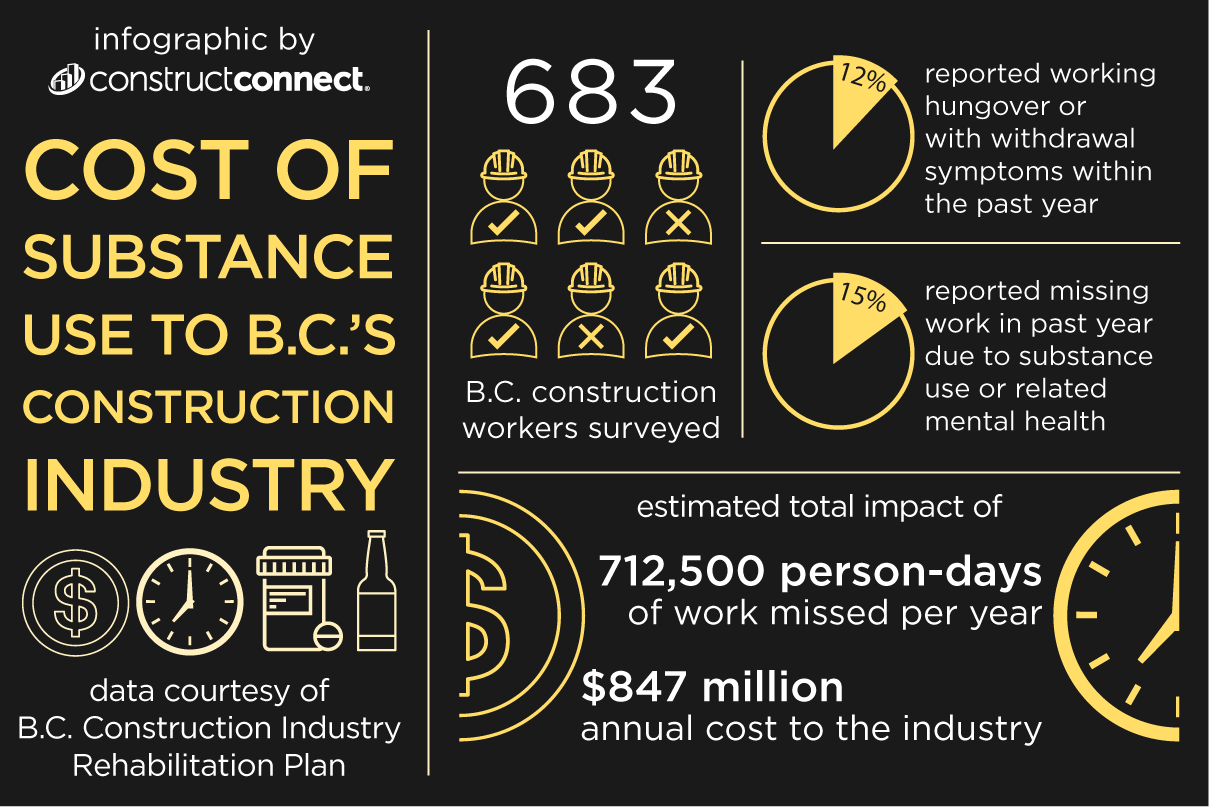��������ion is critical to B.C.’s economy.
According to the BC ��������ion Association’s Spring 2023 Stat Pack, construction contributes 9.7 per cent to the province’s GDP, the value of current construction projects is $137 billion and it is the number-one employer in the goods sector.
A recent study, however, said all is not well in the industry.
According to Estimation of the Economic Impact of Substance Use and the Related Mental Health Issues on the BC ��������ion Industry, a report commissioned by the ��������ion Industry Rehabilitation Plan (CIRP), hundreds of thousands of worker-hours are being lost every year.
In financial terms, the construction industry and the B.C. government are missing out on hundreds of millions of dollars annually.
“The numbers are staggering,” said Vicky Waldron, CIRP executive director. “We knew they’d be high, but we didn’t realize they would be that high.”
Waldron said CIRP already knew the “who” and the “why” of substance use before it commissioned the study.
“We also wanted to find out the ‘what’ – the financial impact – in order to get a bigger picture of the effect on the economy,” said Waldron.
The study was carried out by Craig Mitton of the University of BC and Prioritize Consulting and Francois Dionne, also of Prioritize Consulting.
Mitton said substance use and related mental health issues have an economic impact on construction in two ways: Days of work missed and days of work when a worker was present but hungover or in withdrawal, and therefore not able to work at full capacity.
To obtain data on those effects, the researchers surveyed industry workers, asking them about missed and hungover days, plus some general questions about substance use and mental health.
“We tried to reach as many construction employees as possible,” said Mitton. “They were contacted by email and text with messages that described the survey and its purpose, with a link to the survey.”
The survey was designed to be completed in less than three minutes.
The researchers received 683 responses. Approximately two-thirds came from the Lower Mainland, and the rest was more or less equally divided between the Interior, Vancouver Island and Northern B.C.
Fifteen per cent of respondents, almost one in six, reported missing an average 19 days (nearly four work weeks) in 2022 because of substance use and related mental health problems.
Assuming a total of approximately 250,000 B.C. construction workers, the number of days lost works out to a total of 712,500 days.

Furthermore, 12 per cent, about one in eight, reported coming to work hungover or in withdrawal an average 29 days – almost six work weeks.
That means a total of 870,000 worker-days were lost to hangovers and withdrawal symptoms.
Researchers assumed two components to the economic value of a day of missed work.
“We assumed $40 per hour in wages, $10 per hour in benefits, times an eight-hour day, equals $400,” said Mitton.
The second component is a 15 per cent loss of productivity from the remaining members of a crew of six due to one missing person or approximately $300.
Therefore, the total estimated daily loss is $700 per worker.
So, 712,500 workdays at $700 per day works out to just under $499 million per year.
Assuming the same average value of one day of work of $400 and the same
crew size of six members, the total annual cost to the industry of a hungover or in withdrawal worker is an estimated $348 million.
Therefore, according to the calculations in the report, the total annual cost to the B.C. construction industry of days missed plus days hungover or dealing with withdrawal is $847 million.
On top of that, the annual cost to the B.C. government in taxes forgone is $318 million.
“Those are big numbers,” said Waldron.
Following the completion of the survey, CIRP released a 38-page white paper called ��������ion Industry-Led Solution to the Overdose Epidemic.
The document outlines the extent of the problem and proposes a number of solutions for industry and government to consider.
CIRP’s program is built on three foundational pillars that provide a continuum of care for the prevention and treatment of substance use and related mental health problems.
The three pillars framework focuses on keeping employees healthy across
their whole lifespan rather than treating their illness in isolation.
The framework is based on a model that takes into account a worker’s physical, mental and social needs.
For details on the survey, And for more information on the white paper









Recent Comments
comments for this post are closed